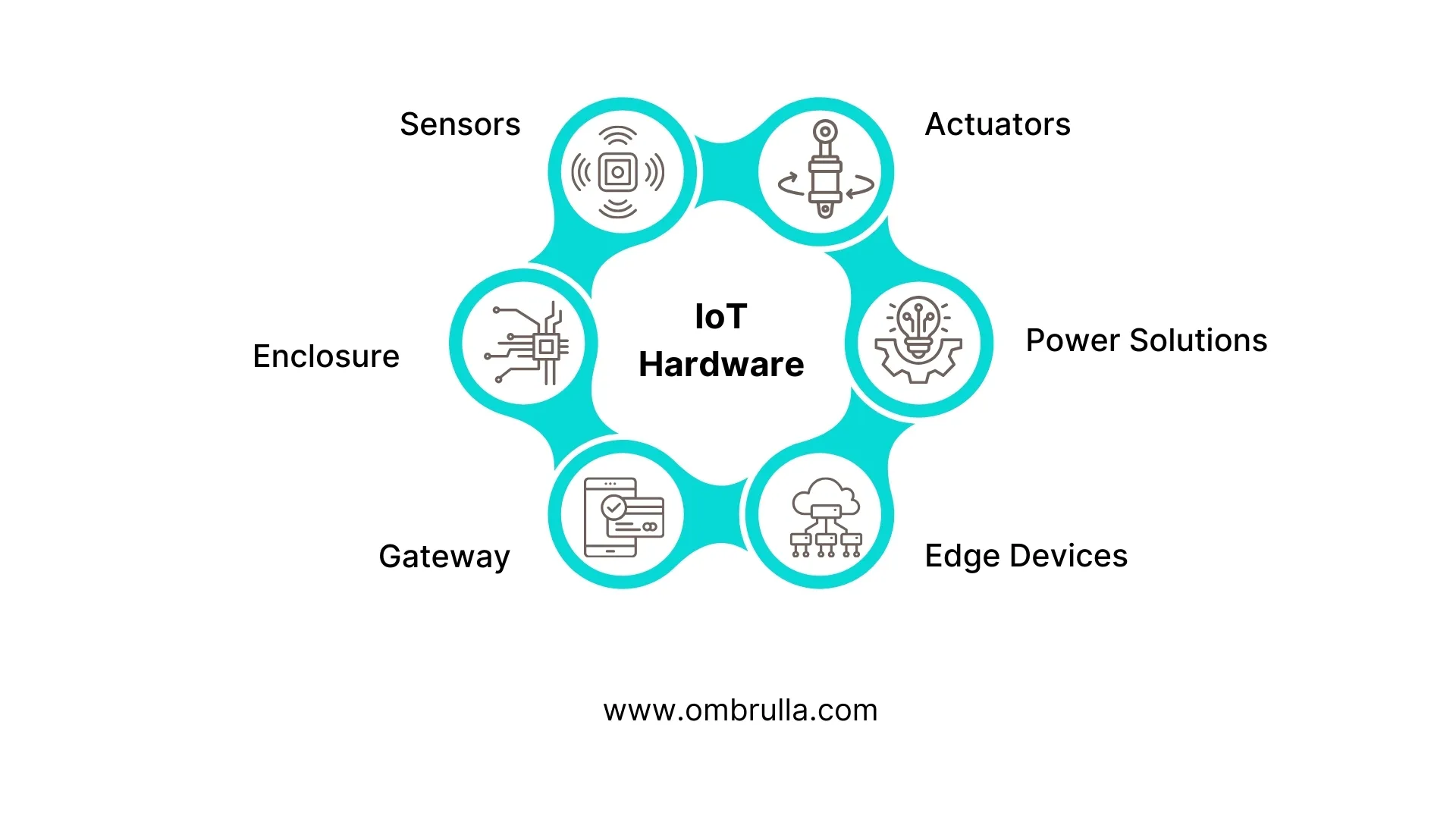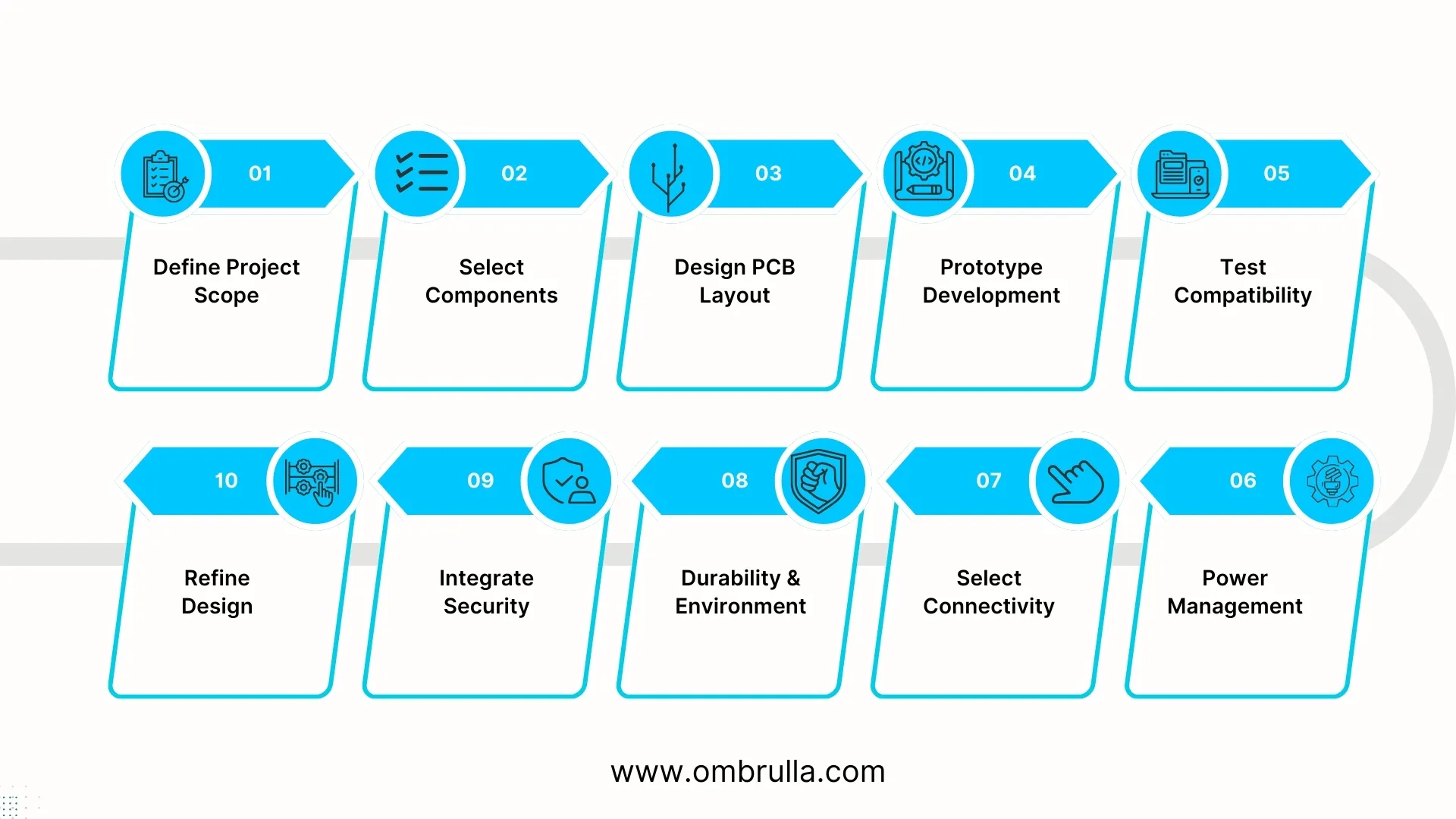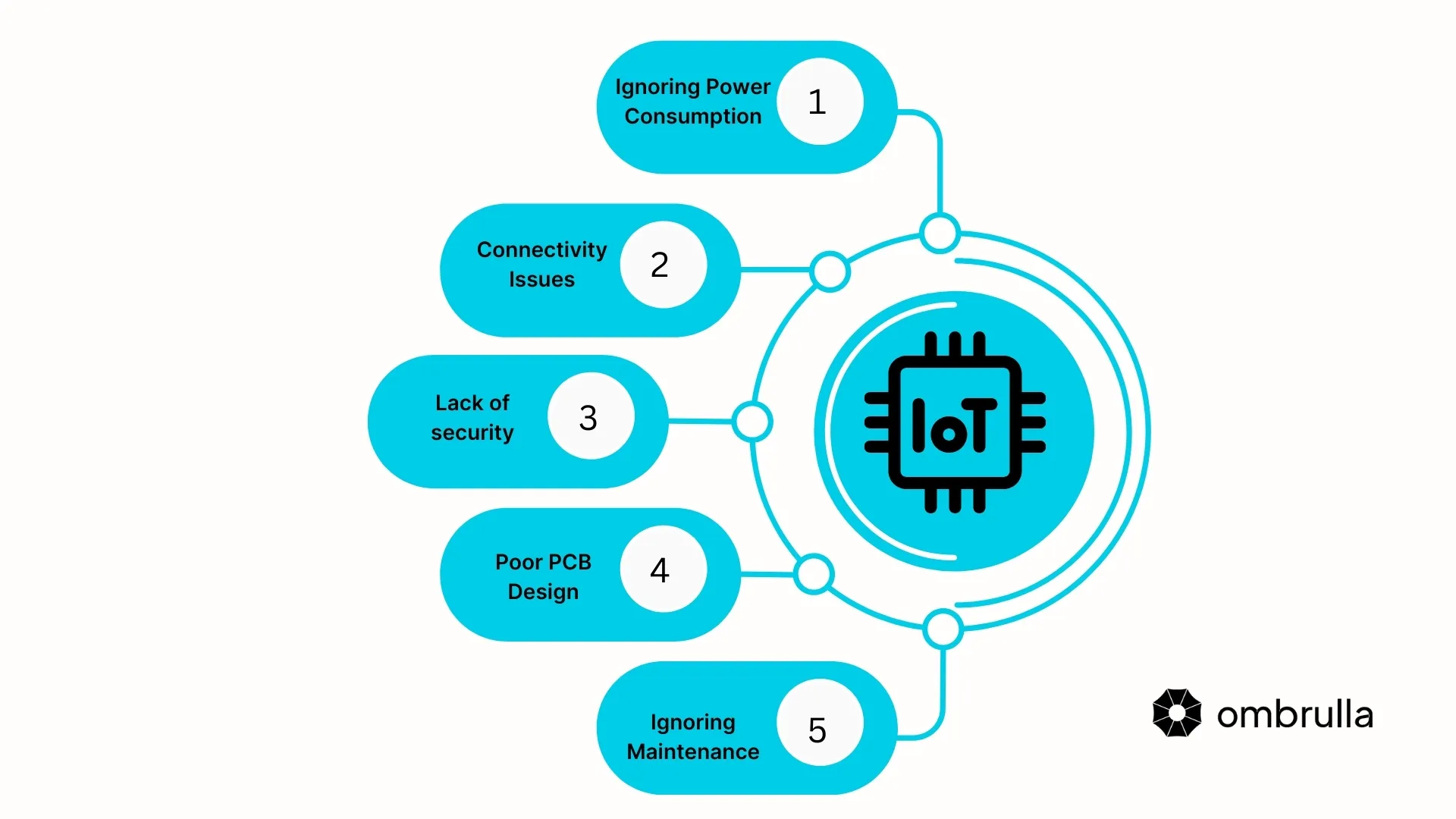Introduction
The Internet of Things (IoT) is revolutionizing the way we interact with the world around us. From smart homes to industrial automation, IoT projects have opened endless possibilities. However, the backbone of any successful IoT system lies in its hardware. Choosing the right hardware is a critical step that determines the performance, scalability, and reliability of your project.
This blog explores everything you need to know about choosing the best hardware for your IoT project. Let's dive into what makes IoT hardware tick, how to choose the right components, and why this step is pivotal for your project's success.
What is IoT Hardware?
IoT hardware refers to the physical devices and components that form the foundation of an IoT system. These include sensors, microcontrollers, communication modules, actuators, and power solutions that enable data collection, processing, and connectivity. It acts as the bridge between the physical world and digital intelligence.
The Role of Hardware in IoT Projects
IoT hardware forms the physical backbone of your project. It consists of the tangible components responsible for sensing, communicating, and processing data. While the software provides the intelligence, it's the hardware that gathers inputs and executes actions. Here's why selecting the right hardware is critical:
Performance
Superior hardware ensures smooth operations, accurate data collection, and reliable communication.
Scalability
The hardware must be capable of scaling with your project as it grows.
Durability
IoT devices often operate in harsh or unpredictable environments, requiring robust designs.
Energy Efficiency
Many IoT devices run on limited power sources, making energy-efficient hardware essential.
Security
Robust hardware with integrated security features helps safeguard your IoT system against cyber threats, ensuring data integrity and protecting against unauthorized access.
Key Components of IoT Hardware
Key components like Real-Time Location Systems (RTLS), IoT sensors, and gateways form the backbone of IoT hardware, enabling precise tracking, monitoring, and seamless communication. These components work together to gather real-time data, ensuring efficient and reliable performance across IoT systems.
The essential components of IoT hardware include:

Sensors
Whether it's tracking temperature, humidity, or motion, pick sensors tailored to your project's goals.
Actuators
Need your system to physically interact with the world? Reliable actuators are a must.
Power Solutions
Batteries, solar panels, or energy harvesters - choose what's best for your deployment.
Edge Devices
Real-time data processing, Reduced latency, Edge computing hardware is your answer.
Gateway
The bridge between your devices and the cloud. Make sure it supports all necessary protocols.
Enclosure
Protect your device from dust, water, and anything else Mother Nature throws its way.
Tips for Selecting IoT Hardware
1.Understand Your Project's Requirements
Clearly define what your IoT project aims to achieve. Identify the data you need to collect, the environment your devices will operate in, and your connectivity needs.
2. Balance Cost and Performance
While it's tempting to opt for the cheapest components, sacrificing quality can lead to unreliable performance and higher maintenance costs in the long run.
3. Prioritize Energy Efficiency
Opt for components that minimize power consumption without compromising functionality.
4. Test for Compatibility
Ensure all hardware components work seamlessly together, avoiding integration headaches down the line.
5. Plan for Scalability
Choose hardware that can grow with your project to accommodate additional devices or expanded functionalities.
6. Focus on Security
Hardware with built-in security features is essential to protect your IoT system from cyber threats.
What Makes a Great IoT Device?
IoT devices aren't just gadgets; they're the backbone of your entire project. Here's what they need to shine:
Low Power Consumption
Many IoT devices are deployed in the wild - miles away from power sources. A device that guzzles energy won't cut it.
Compact Size
From smart thermostats to wearable fitness trackers, compact hardware is the gold standard.
Durability
Whether it's braving the blazing sun or freezing temperatures, your device has to survive the elements.
Scalability
Starting small? Great. But as your system grows, your hardware should adapt seamlessly.
Security
In today's world, hackers love to party with unprotected IoT devices. Your hardware needs robust security features baked in.
Choosing the Right Connectivity Standard
When selecting the right connectivity standard, it's essential to consider the requirements of wearable devices, emergency alert systems, and fall detection sensors. These systems rely on reliable communication protocols to ensure real-time data transmission and prompt responses in critical situations.
Connectivity is the backbone of any IoT project. The right communication standard depends on your project's requirements:
Wi-Fi
Best for indoor applications with high-speed data needs.
Bluetooth/BLE
Ideal for low-power, short-range communication.
Cellular (4G/5G)
Essential for applications requiring extensive coverage, such as connected vehicles.
Ethernet
Best for industrial environments needing robust, high-speed connections.
NFC (Near Field Communication)
Perfect for short-range, contactless communication.
Satellite Communication
Essential for remote global connectivity in maritime and aviation.
Popular Hardware Platforms for IoT Projects
Arduino
Known for its simplicity and versatility, Arduino is perfect for beginners and small-scale projects. It's easy to program and offers a wide range of modules.
ESP32
An affordable option with built-in Wi-Fi and Bluetooth, ESP32 is ideal for IoT applications requiring connectivity.
Raspberry Pi
A full-fledged microcomputer capable of handling complex tasks, Raspberry Pi is a favorite for projects demanding high computational power.
STM32
Designed for industrial-grade applications, STM32 offers a balance of performance and efficiency.
NVIDIA Jetson
Designed for edge AI applications, NVIDIA Jetson supports advanced features like real-time video analytics and AI model deployment.
Key Steps in IoT Hardware Development

1. Define Project Scope
Clearly outline the objectives and requirements of your IoT project, including data collection, environmental factors, and desired outcomes.
2. Select Components
Choose appropriate sensors, actuators, microcontrollers, and communication modules that align with the project needs.
3. Design PCB Layout
Develop a schematic and PCB layout that ensures effective signal transmission and minimizes interference or cross-talk.
4. Prototype Development
Build initial prototypes to test and validate your design, ensuring it meets functional and performance expectations.
5. Testing for Compatibility
Verify that all selected components work seamlessly together and integrate without issues, avoiding future system incompatibilities.
6. Power Management Design
Incorporate energy-efficient components and design for low power consumption to extend battery life, especially in remote or mobile deployments.
7. Select Connectivity Standards
Choose the most suitable communication protocols (e.g., Wi-Fi, Bluetooth, LoRaWAN) based on project requirements for range, speed, and power efficiency.
8. Durability and Environmental Considerations
Ensure the hardware can withstand environmental conditions such as temperature extremes, humidity, or vibrations, by selecting rugged enclosures.
9. Integrate Security Features
Incorporate encryption, secure bootloaders, and other hardware-level security measures to protect against cyber threats.
10. Iterate and Refine
Continuously test, gather feedback, and refine the hardware design to address performance, reliability, and scalability before finalizing the product for mass production.
IoT Hardware Design Pitfalls

1. Ignoring Power Consumption
Ignoring power consumption can lead to rapid battery drain, reducing the reliability of your IoT devices. Without proper energy-efficient components, your devices may fail to perform as expected, especially in remote or battery-powered deployments.
2. Connectivity Issues
Connectivity issues can significantly impact the performance of your IoT devices, leading to unreliable data transmission and delayed responses. Choosing the right communication protocol, such as Wi-Fi, Bluetooth, or LoRaWAN, is crucial to ensure optimal range and data transfer rates.
3. Lack of Security
Lack of security in IoT devices exposes them to potential cyberattacks, putting both data and functionality at risk. To safeguard against these vulnerabilities, it's essential to integrate encryption, secure bootloaders, and robust authentication methods into the design.
4. Poor PCB Design
A poor PCB design can lead to significant interference and reliability issues, affecting the overall performance of your IoT device. Ensuring a robust PCB layout is essential, with attention to proper heat dissipation and minimizing electromagnetic interference.
5. Ignoring Maintenance
Ignoring maintenance after deployment can result in long-term issues and device failure. Without proper post-deployment monitoring, problems may go undetected, leading to costly repairs or replacements.
Conclusion
The hardware you choose plays a pivotal role in the success of your IoT project. By understanding your project's specific needs and prioritizing key factors like power efficiency, connectivity, and security, you can create a system that is both effective and future-ready. Choosing the right components and considering scalability ensures your IoT system will perform reliably as it grows.
Remember, hardware isn't just a technical requirement it's a strategic decision that shapes your project's efficiency, longevity, and performance. Take the time to thoroughly evaluate your options, test for compatibility, and ensure that your hardware choices align with your project goals for a robust and scalable IoT solution.





